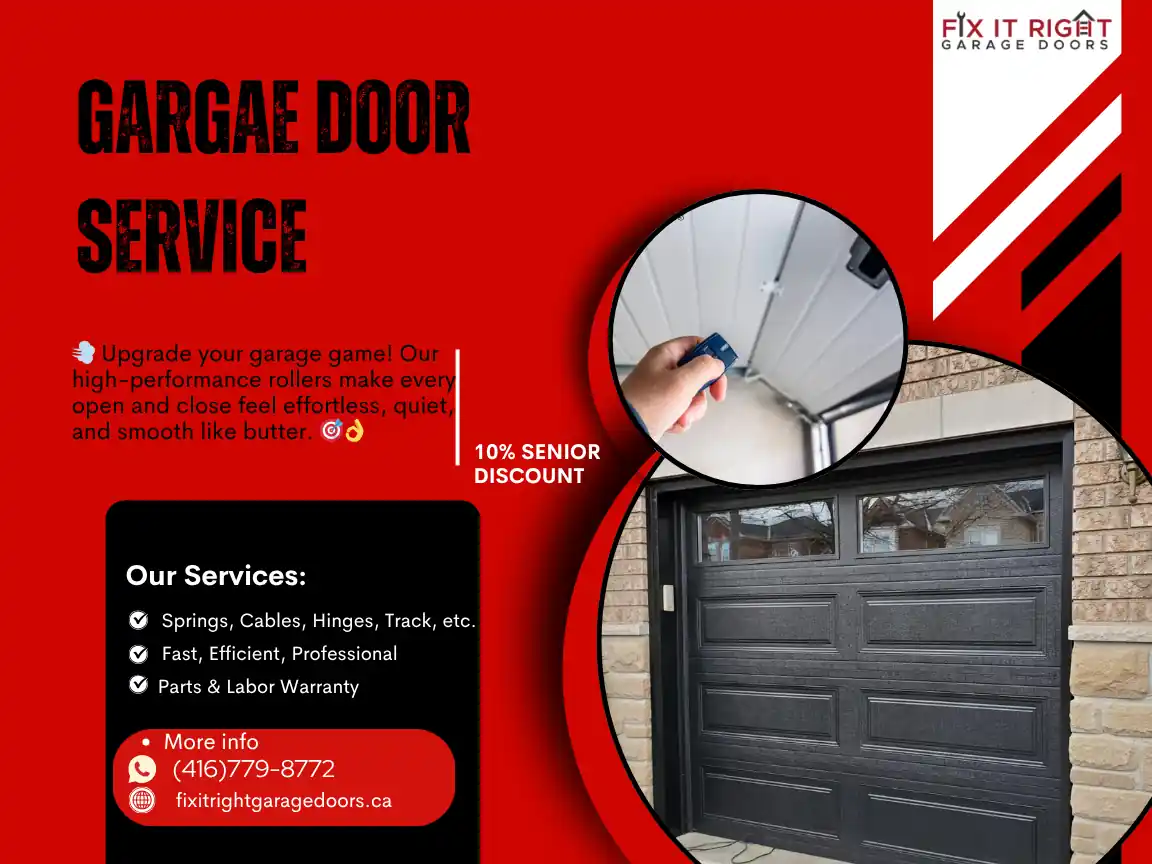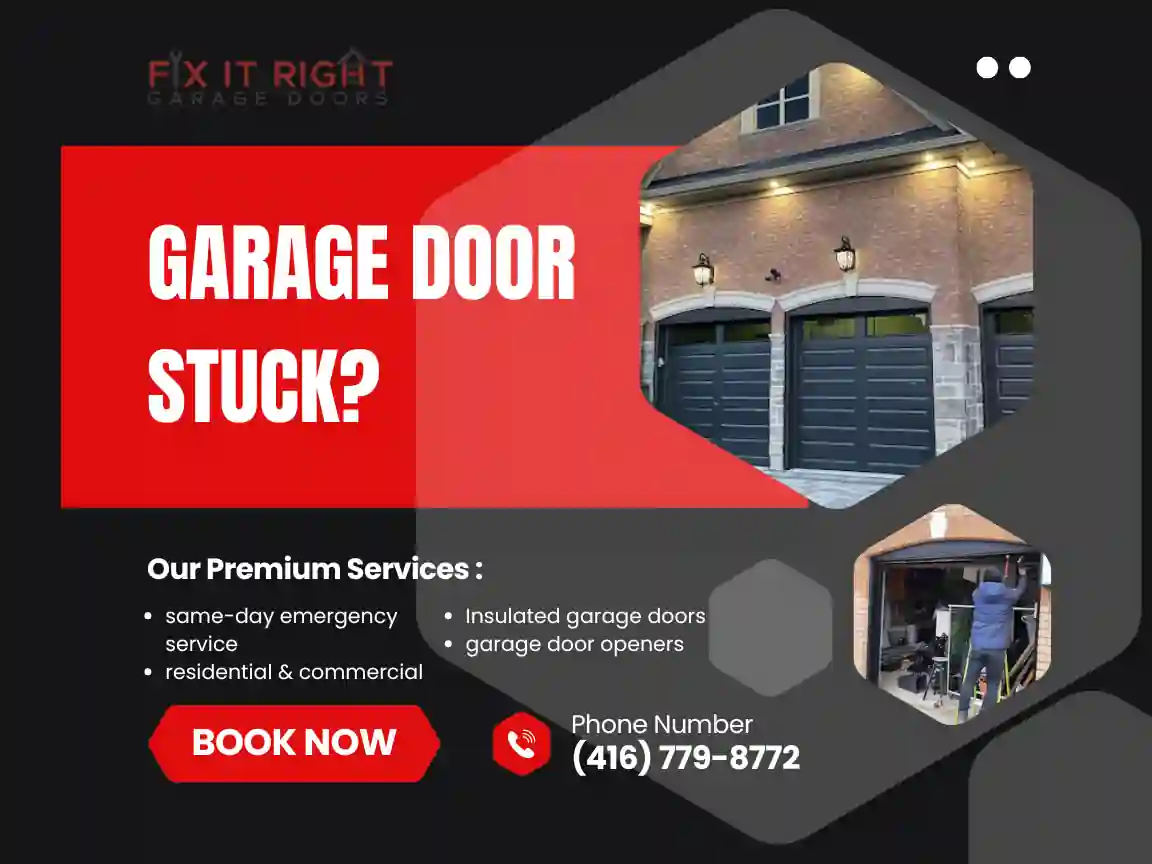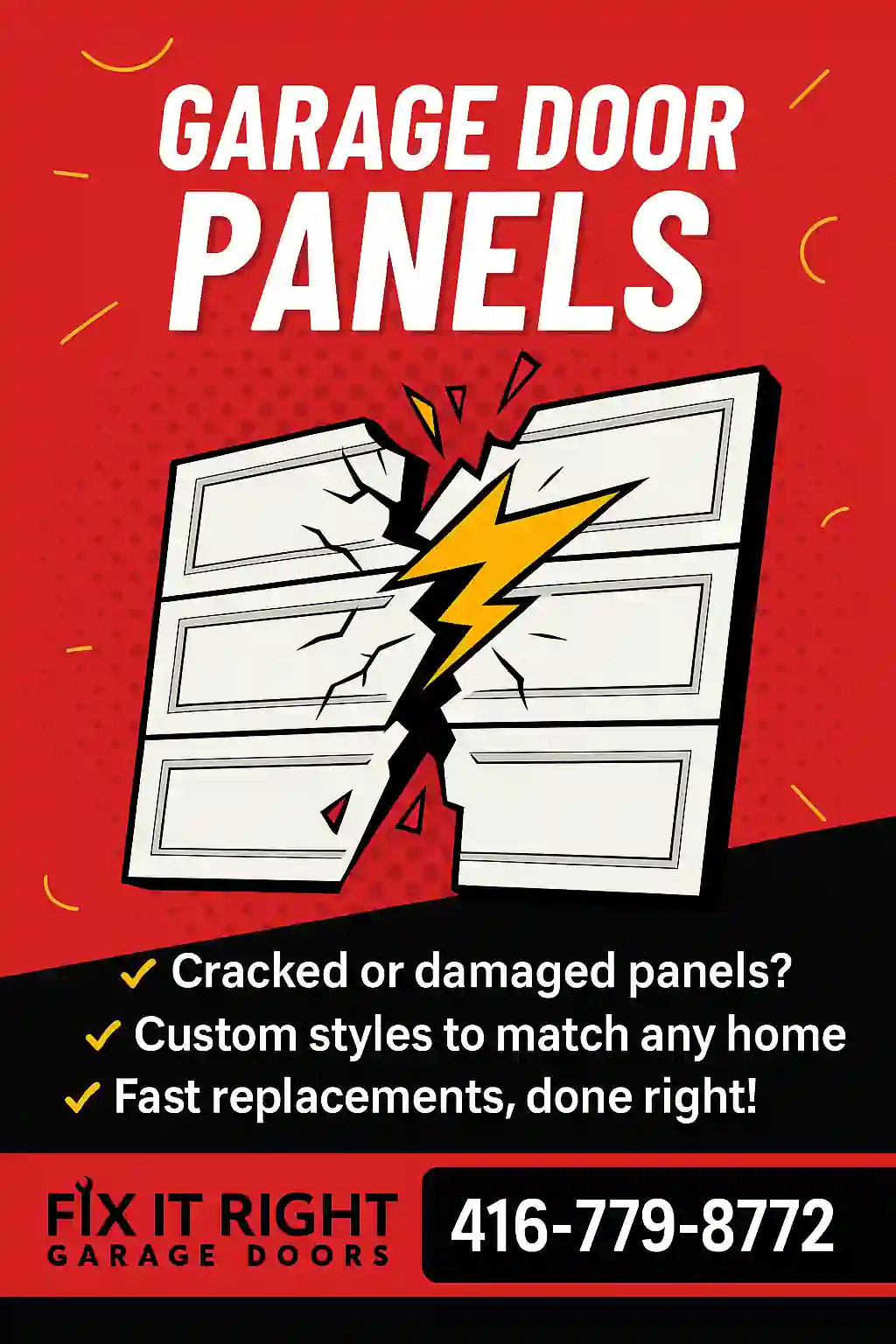Your garage door and opener system forms the largest movable component of your home, serving as both a functional entryway and a significant element of your property’s curb appeal. In 2025, selecting the ideal garage door and openers requires careful consideration of numerous factors, from materials and security features to energy efficiency and smart home integration. This comprehensive guide will walk you through everything you need to know about modern garage door and openers systems, helping you make an informed decision that balances aesthetics, functionality, and budget.
Before exploring specific options, let’s examine the average costs you can expect for garage door and openers in 2025:
| Door Type | Door Cost Range | Opener Type | Opener Cost Range | Installation | Total System Cost |
|---|---|---|---|---|---|
| Steel (Single) | $750-$1,500 | Chain Drive | $150-$300 | $200-$350 | $1,100-$2,150 |
| Steel (Double) | $1,200-$2,500 | Belt Drive | $250-$400 | $250-$450 | $1,700-$3,350 |
| Wood (Single) | $1,500-$3,000 | Screw Drive | $200-$350 | $200-$350 | $1,900-$3,700 |
| Wood (Double) | $2,500-$5,000 | Direct Drive | $300-$450 | $250-$450 | $3,050-$5,900 |
| Aluminum (Single) | $1,200-$2,000 | Smart Opener | $350-$600 | $300-$500 | $1,850-$3,100 |
| Fiberglass (Single) | $1,500-$2,500 | Battery Backup | +$75-$150 | Included | +$75-$150 |
Understanding these price ranges will help you establish a realistic budget as we delve into the various aspects of garage door and openers. Let’s explore the essential factors to consider when selecting these critical components for your home.
Types of Garage Doors: Materials and Styles
Selecting the right garage door material is the first step in creating an effective garage door and openers system. Each material offers distinct advantages in terms of appearance, durability, maintenance requirements, and price point.
Steel Doors: Comprising approximately 70% of the garage door market in 2025, steel doors offer excellent durability and security at a moderate price point. Modern steel doors feature improved insulation values (R-values between 6 and 18) and come in various design options that can mimic wood grain. Single-layer steel doors start at $750, while premium triple-layer insulated doors can cost up to $2,500 for double-width models.
Wood Doors: For classic aesthetics and architectural authenticity, wood doors remain a premium choice. Available in cedar, redwood, and mahogany, these doors offer unmatched natural beauty but require more maintenance and typically cost between $1,500 and $5,000 depending on size and wood type. They pair beautifully with higher-end garage door openers that offer smooth, quiet operation.
Aluminum and Glass Doors: Contemporary homes benefit from modern aluminum-framed doors with glass panels, offering natural light and a sleek appearance. These range from $1,200 to $3,500 depending on glass type and frame finish. When pairing with garage door openers, their lighter weight allows for more opener options.
Fiberglass Doors: Providing good insulation and resistance to harsh environments, fiberglass doors are gaining popularity in coastal areas. With costs between $1,500 and $3,000, they offer a middle ground between steel and wood while standing up well to salt air and humidity.
Vinyl Doors: Dent-resistant and maintenance-free, vinyl doors ($950-$2,000) are increasingly popular for family homes where durability is a priority. Their lightweight nature makes them compatible with most garage door openers.
For example, the Andersons in Seattle chose a contemporary aluminum and glass door for their modern home renovation, pairing it with a high-end belt-drive opener for whisper-quiet operation. The total system cost $3,200 but dramatically enhanced their home’s appearance while providing reliable functionality.


Understanding Garage Door Openers: Types and Technologies
The right opener is crucial to your garage door and openers system’s performance. In 2025, several drive mechanisms dominate the market, each with specific benefits and limitations.
Chain Drive Openers: The most affordable option ($150-$300), chain drives use a metal chain on a rail to move the door. They’re reliable and strong but tend to be noisier than other options. They work well with heavier doors but may not be ideal for garages located beneath bedrooms.
Belt Drive Openers: Operating similarly to chain drives but using a reinforced belt instead of a metal chain, belt drives ($250-$400) offer significantly quieter operation. They’re ideal for attached garages and complement both traditional and contemporary door styles with their smooth performance.
Screw Drive Openers: With fewer moving parts, screw drive systems ($200-$350) require less maintenance and operate by turning a threaded steel rod. They offer a good balance of power and noise level, making them versatile for various garage door and openers combinations.
Direct Drive Openers: The quietest option available, direct drive openers ($300-$450) feature a motor that moves along a stationary chain, resulting in minimal vibration. These premium openers often come with extended warranties and pair excellently with high-end garage doors.
Smart Openers: The fastest-growing segment of the market, smart garage door openers ($350-$600) offer Wi-Fi connectivity, smartphone control, voice assistant integration, and security features. Many 2025 models include video monitoring, customizable access codes, and integration with home automation systems.
The Martinez family in Chicago recently upgraded their garage door and openers system with a smart belt-drive opener. The $375 device allows them to verify their door’s status remotely, receive alerts when the door operates, and set time-based access codes for service providers—features they consider well worth the premium over standard openers.
Matching Your Garage Door with the Right Opener
Creating an effective garage door and openers system requires proper pairing of components. Here are the key considerations for matching door types with appropriate openers:
| Door Type | Weight | Recommended Opener | Special Considerations |
|---|---|---|---|
| Single Steel (Non-insulated) | Light-Medium | Chain or Belt Drive (½ HP) | Budget-friendly combination |
| Double Steel (Insulated) | Medium-Heavy | Chain Drive (¾ HP) | Prioritize strength for heavier doors |
| Wood (Single/Double) | Heavy | Chain or Direct Drive (¾-1 HP) | Requires stronger motor |
| Aluminum/Glass | Light | Belt or Direct Drive (½ HP) | Quieter operation complements premium doors |
| Carriage House | Variable | Belt Drive with Battery Backup | Authentic appearance with modern convenience |
| High-Lift or Commercial | Extra Heavy | Jackshaft or Commercial Grade | Specialized installation required |
The opener’s horsepower rating is particularly important when matching with your door. For standard residential garage door and openers systems:
- ⅓ HP: Suitable only for the lightest single doors
- ½ HP: The most common rating, appropriate for most single doors and lightweight double doors
- ¾ HP: Recommended for insulated double doors, wooden doors, or doors with carriage house hardware
- 1+ HP: Best for oversized, custom, or commercial-grade doors
For example, the Wilson family installed a beautiful but heavy cedar carriage-style door for their historic home renovation. They wisely selected a ¾ HP belt drive opener with battery backup, ensuring reliable operation during power outages while maintaining the door’s traditional aesthetic with modern convenience.
Smart Features Transforming Garage Door and Openers in 2025
The integration of smart technology has revolutionized garage door and openers systems. Here are the most impactful innovations of 2025:
Smartphone Control: Most mid-range and premium openers now include dedicated apps that allow remote operation, status monitoring, and activity logs. These apps can alert you if you’ve left the door open and let you grant temporary access to visitors or service personnel.
Biometric Security: Fingerprint and facial recognition systems are increasingly common in premium garage door openers, offering enhanced security while eliminating the need for traditional remotes or keypads.
AI-Powered Predictive Maintenance: Advanced openers now monitor system performance, detecting potential issues before they cause failures. The opener can notify you when springs, rollers, or other components show signs of wear, preventing costly emergency repairs.
Energy Management Integration: Smart garage door and openers systems can now coordinate with your home’s energy management system, ensuring your garage is properly insulated and climate-controlled only when necessary.
Enhanced Security Features: Modern openers include rolling-code technology, encryption, and tamper alerts that notify you immediately of unauthorized access attempts. Some premium models incorporate built-in cameras with motion detection and two-way communication.
Vehicle Integration: Direct communication between your vehicle and garage door opener eliminates the need for separate remotes. In 2025, most new vehicles come with integrated garage door controls that can be programmed to operate automatically based on proximity.
According to a recent study by the Home Automation Association, homes with smart garage door and openers systems report 73% fewer unauthorized entry attempts and 58% reduced energy costs related to garage climate control compared to traditional systems.
Installation Considerations for Garage Door and Openers
Professional installation ensures your garage door and openers function properly, safely, and according to warranty requirements. Here’s what to expect:
Door Installation: Professional installation of a new garage door typically takes 3-5 hours and includes:
- Removal and disposal of existing door (if applicable)
- Assembly and mounting of the new door panels
- Installation of tracks, rollers, and hardware
- Adjustment of spring tension
- Weather sealing and insulation verification
Opener Installation: Adding or replacing an opener generally requires 2-3 hours and involves:
- Mounting the power unit and rail system
- Installing safety sensors and control panel
- Programming remote controls and smart features
- Testing operation and safety mechanisms
- Demonstrating features and maintenance requirements
DIY vs. Professional Installation: While DIY opener installation is possible for experienced homeowners, door installation requires specialized tools and knowledge of spring systems, which store enormous energy and can cause serious injury if mishandled. Professional installation typically adds $200-$500 to your garage door and openers system cost but includes warranties on both parts and labor.
Permitting Requirements: Many municipalities require permits for new garage door installations, particularly if structural changes are involved. Professional installers typically handle this paperwork as part of their service.
The Garcia family in Houston learned this lesson the hard way when they attempted to install their own opener. After several frustrating hours and a damaged door panel, they ultimately called a professional who completed the job correctly in less than two hours, saving them from potential safety hazards and ensuring proper operation of their garage door and openers system.
Energy Efficiency and Insulation: The Hidden Value in Garage Door and Openers
Modern garage door and openers systems contribute significantly to your home’s overall energy efficiency. Here are the key factors to consider:
Insulation R-Values: The R-value measures thermal resistance—higher numbers indicate better insulation. In 2025, energy-efficient garage doors offer:
- Single-layer doors: R-4 to R-6
- Double-layer doors: R-8 to R-12
- Triple-layer doors: R-14 to R-18
Weather Sealing: High-quality weather stripping prevents air leakage around the door perimeter. Look for EPDM rubber seals that remain flexible in extreme temperatures and maintain their shape over time.
Solar Readiness: Many premium garage door openers now include solar compatibility, allowing you to power your opener with a small solar panel for improved energy independence and reduced operating costs.
Climate Zone Considerations: Your location’s climate should influence your garage door and openers selection:
- Northern/cold climates: Prioritize high R-value doors (R-14+) and openers with heated components for winter reliability
- Southern/hot climates: Look for reflective door surfaces and openers with heat-resistant electronics
- Coastal areas: Choose corrosion-resistant materials for both door and opener components
Energy Savings Calculator: To estimate potential savings, multiply your garage’s square footage by your local energy cost per square foot per degree difference. A well-insulated 400 sq. ft. garage can save $200-$400 annually in energy costs in extreme climates.
The Thompsons in Minnesota upgraded from an uninsulated metal door (R-3) to a triple-layer insulated door (R-16) with proper weatherstripping. They noted a 15% reduction in their winter heating bills and reported that their adjacent rooms maintained more consistent temperatures throughout the year, demonstrating the significant impact of an energy-efficient garage door and openers system.
Maintenance Tips for Extending Your Garage Door and Openers Lifespan
Proper maintenance can double the lifespan of your garage door and openers system while ensuring safe, reliable operation. Follow this maintenance schedule:
Monthly Maintenance:
- Visual inspection of springs, cables, rollers, and pulleys for wear
- Testing of auto-reverse safety features using a paper towel roll
- Lubrication of moving parts (except belt or chain) with silicone-based lubricant
- Checking and tightening hardware, including hinges and brackets
Seasonal Maintenance:
- Washing doors with mild detergent to remove corrosive substances
- Inspecting and replacing weatherstripping as needed
- Checking opener sensitivity settings
- Balancing the door (should stay in place when manually opened halfway)
Annual Professional Inspection:
- Comprehensive safety inspection of all mechanical components
- Spring tension adjustment
- Sensor alignment verification
- Motor and circuit board assessment
- Cable and hardware examination
Warning Signs That Require Immediate Attention:
- Door operation becoming noisy or irregular
- Visible sagging or uneven movement
- Delays in response to opener commands
- Safety sensors failing to detect obstacles
- Unusual motor sounds or overheating
According to industry data, a well-maintained garage door and openers system typically lasts 15-20 years, while neglected systems often require replacement within 7-10 years. The average professional maintenance service costs $80-$120 annually but can prevent thousands in premature replacement costs.
Mr. Johnson, a homeowner in Dallas, diligently followed the recommended maintenance schedule for his garage door and openers system. After 22 years, his original door was still functioning properly with only minor repairs, while many of his neighbors had replaced their doors multiple times during the same period.
Security Features: Protecting Your Home Through Garage Door and Openers
Your garage door often provides direct access to your home, making security features a critical consideration when selecting garage door and openers systems. Here are the essential security elements available in 2025:
Rolling Code Technology: Standard in all modern openers, this feature changes your opener’s access code after each use, preventing code capture by potential intruders. When upgrading older garage door and openers, this should be considered a minimum security requirement.
Vacation Mode: This setting disables all remote controls while you’re away, preventing unauthorized operation until deactivated via the wall console.
Automatic Closing: Programmable timers can close your door automatically after a set period, reducing the risk of accidentally leaving it open.
Integrated Cameras: Premium opener models incorporate HD cameras that activate when the door operates, allowing you to monitor garage access remotely and record activity.
Fingerprint and Facial Recognition: Biometric access controls provide enhanced security by ensuring only authorized individuals can operate your garage door and openers.
Smart Lock Integration: Interconnection with your home’s smart lock system allows for synchronized security protocols and centralized monitoring.
Backup Power Systems: Battery backup ensures your door remains operable during power outages, preventing you from being locked out or forced to leave your garage unsecured.
Manual Release Protection: Advanced systems include tamper-proof manual release mechanisms that prevent “fishing” attempts where thieves try to access the emergency release cord from outside.
According to the National Association of Home Builders, homes with secured garage door and openers systems experience 87% fewer break-in attempts through the garage, which otherwise represents a common vulnerability in residential security.
Troubleshooting Common Garage Door and Openers Issues
Even well-maintained systems occasionally experience problems. Here’s how to diagnose and address common garage door and openers issues:
Door Won’t Open or Close:
- Check power source and batteries in remotes
- Verify that sensors are aligned and unobstructed (indicated by steady lights)
- Inspect track for obstacles or debris
- Test wall button to isolate remote control problems
- Check motor’s thermal protection (may need cooling period after heavy use)
Noisy Operation:
- Lubricate all moving parts with silicone spray
- Tighten hardware throughout the system
- Inspect rollers for wear and replace if necessary
- Check for loose chain or belt on opener
- Consider upgrading to a quieter drive system for older openers
Door Reverses Before Closing Completely:
- Clean photo-eye sensors with soft cloth
- Check sensor alignment (LED lights should be steady)
- Adjust close force settings on opener
- Inspect track for binding or obstacles
- Verify proper door balance (manual operation should be smooth)
Remote Control Range Issues:
- Replace batteries
- Check for LED interference near the opener
- Verify antenna is hanging down from opener
- Test for frequency interference from other devices
- Consider upgrading to a newer frequency remote system
Door Opens But Won’t Close:
- This is almost always a safety sensor issue
- Check for obstructions in the door path
- Clean sensors and verify alignment
- Inspect sensor wiring for damage
- Test for direct sunlight interference at certain times of day
Most garage door and openers manufacturers provide detailed troubleshooting guides specific to their models. According to industry reports, approximately 70% of service calls could be resolved by homeowners with basic troubleshooting knowledge.
Choosing the Right Garage Door and Openers for Your Home Style
Your garage door can represent up to 40% of your home’s visible facade, making style and design crucial considerations. Here’s how to select garage door and openers that complement your home’s architectural style:
Colonial/Traditional Homes:
- Door Style: Raised panel or carriage house designs
- Materials: Steel with wood-grain texture or genuine wood
- Windows: Rectangular with grilles or arched tops
- Hardware: Black wrought iron or antique bronze
- Color: White, soft neutrals, or colors matching trim
- Opener: Belt drive for quiet operation with traditional remote
Craftsman/Bungalow:
- Door Style: Panel designs with vertical emphasis
- Materials: Wood or wood-composite with visible grain
- Windows: Square or rectangular with geometric muntins
- Hardware: Black or bronze strap hinges and handles
- Color: Earth tones, muted greens, or natural wood stains
- Opener: Bell drive with craftsman-style wall buttons
Contemporary/Modern:
- Door Style: Flush panels or aluminum/glass combinations
- Materials: Aluminum, frosted glass, or smooth-finish steel
- Windows: Full-view glass or horizontal ribbon windows
- Hardware: Minimalist, brushed steel
- Color: Bold statements, black, or metallic finishes
- Opener: Direct drive with smartphone control and minimal visible hardware
Mediterranean/Spanish:
- Door Style: Arch-top designs or plank-style doors
- Materials: Wood or textured steel
- Windows: Arched designs, often with decorative ironwork
- Hardware: Decorative wrought iron
- Color: Warm earth tones or distressed wood finishes
- Opener: Hidden jackshaft opener for authentic appearance
Ranch/Farmhouse:
- Door Style: Carriage house or barn door designs
- Materials: Wood or wood-look steel
- Windows: Square or rectangular with crossbuck patterns
- Hardware: Black strap hinges and pull handles
- Color: White, black, red, or natural wood tones
- Opener: Belt drive with rustic control panel design
The Smiths, owners of a Craftsman bungalow in Portland, enhanced their home’s curb appeal by replacing a generic white panel door with a custom wood door featuring square windows and decorative hardware. They paired it with a belt-drive opener with Craftsman-styled wall controls, completing the authentic look while maintaining modern convenience.
Conclusion
Selecting the right garage door and openers system represents a significant investment in your home’s functionality, appearance, and security. In 2025, technological advancements continue to transform these once-simple components into sophisticated systems that contribute to energy efficiency, home security, and daily convenience.
While the initial cost of quality garage door and openers systems ranges from $1,100 to $6,000 depending on materials, features, and size, this investment typically delivers a 90-95% return when selling your home, according to real estate valuations. More importantly, it provides daily benefits in terms of reliability, security, and aesthetic satisfaction.
As you consider your options for garage door and openers, ask yourself:
- How long do you plan to remain in your current home?
- What level of security features would provide peace of mind for your family?
- How important is energy efficiency in your climate zone?
- Which style elements would best complement your home’s architecture?
- What level of smart home integration would enhance your daily routine?
- How frequently will you use your garage door, and what noise considerations apply?
For professional consultation and installation of garage door and openers systems, Fix It Right Garage Doors provides comprehensive service with experienced technicians who can help you navigate these important decisions. Their team offers personalized recommendations based on your specific needs, budget, and home style.
Remember that your garage door and opener system will likely operate more than a thousand times per year. Investing in quality components, professional installation, and regular maintenance ensures this crucial home system will provide reliable service and enhance your property’s value for years to come.










